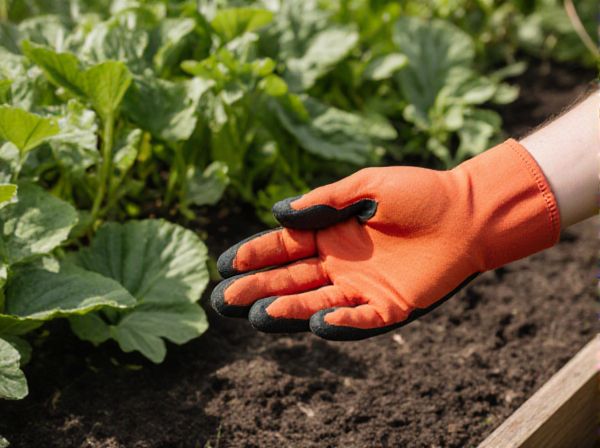
Permaculture beds vs traditional rows Illustration
Permaculture beds promote biodiversity and soil health through layered planting and organic matter integration, enhancing nutrient cycling and water retention. Traditional rows prioritize ease of planting and harvesting but often lead to soil erosion and reduced microbial activity due to monoculture practices. Permaculture's holistic approach creates sustainable ecosystems that improve productivity and resilience compared to conventional row cropping.
Table of Comparison
| Feature | Permaculture Beds | Traditional Rows |
|---|---|---|
| Soil Health | Enhanced with organic matter, promotes biodiversity | Prone to erosion and nutrient depletion |
| Water Efficiency | Maximizes water retention and reduces runoff | Higher water runoff and less retention |
| Plant Diversity | Supports polyculture and companion planting | Typically monoculture plantings |
| Weed Control | Mulching and dense planting reduce weeds | Requires frequent manual weeding |
| Labor Intensity | Lower long-term maintenance | Higher ongoing labor input |
| Yield Efficiency | Higher yield per square foot | Lower yield per square foot |
| Environmental Impact | Sustainable, supports ecosystem health | Often relies on synthetic inputs |
Understanding Permaculture Beds and Traditional Rows
Permaculture beds utilize dense planting and diverse species to mimic natural ecosystems, enhancing soil health and water retention compared to traditional rows, which focus on single-crop planting with more soil disturbance. These beds promote continuous ground cover and organic matter integration, reducing erosion and boosting biodiversity. Traditional rows require more frequent tilling and irrigation, often leading to nutrient depletion and increased pest vulnerability.
Key Principles of Permaculture Bed Gardening
Permaculture bed gardening emphasizes maintaining soil health through permanent, densely planted beds that reduce erosion and enhance biodiversity compared to traditional rows. Key principles include maximizing edge effects by incorporating diverse plant species, using organic mulches to retain moisture and suppress weeds, and designing beds for efficient water use and nutrient cycling. This approach fosters resilient ecosystems, improves soil fertility naturally, and supports sustainable food production.
Traditional Row Planting: Methods and Practices
Traditional row planting involves arranging crops in linear sequences to maximize space and simplify cultivation, irrigation, and harvesting. This method typically uses consistent row spacing and depth for each crop to optimize growth conditions and reduce competition for resources. Soil preparation often includes tilling and fertilization tailored to specific plants, ensuring nutrient availability and pest control within clearly defined boundaries.
Soil Health: Permaculture Beds vs Traditional Rows
Permaculture beds enhance soil health by promoting diverse plant layers and organic matter retention, leading to improved microbial activity and nutrient cycling. Traditional rows often involve repeated tilling, which can disrupt soil structure and diminish microbial populations. The permanent, mulched beds in permaculture systems reduce erosion and increase moisture retention, supporting long-term soil fertility.
Water Efficiency Comparison in Edible Gardens
Permaculture beds significantly enhance water efficiency in edible gardens by utilizing layered planting and organic mulches that retain moisture and reduce evaporation compared to traditional row planting methods. Their design promotes deeper root systems and improved soil structure, which maximizes water infiltration and minimizes runoff. Traditional rows often require more frequent watering due to exposed soil and less effective use of natural water retention strategies.
Space Utilization: Maximizing Yields
Permaculture beds optimize space utilization by integrating diverse plant species in layered arrangements that mimic natural ecosystems, enhancing nutrient cycling and soil health. Traditional rows often underutilize available space by separating crops and focusing on single-species planting, which can limit yield density. Maximizing yields in permaculture beds is achieved through companion planting and perennial crops that reduce bare soil areas and increase overall productivity per square foot.
Labor and Maintenance Requirements
Permaculture beds require less labor and maintenance compared to traditional rows due to their permanent, layered ecosystem design that promotes soil health and reduces weed growth. Traditional row planting demands frequent tilling, weeding, and soil preparation, increasing labor intensity throughout the growing season. Permaculture methods prioritize mulching and companion planting, which naturally suppress pests and retain moisture, minimizing ongoing upkeep.
Pest and Weed Management Strategies
Permaculture beds use diverse, perennial plantings and mulch cover crops to create natural pest barriers and suppress weeds by enhancing soil health and biodiversity. Traditional rows rely more on mechanical weeding and chemical pesticides, which can disrupt soil ecosystems and pest predators. Integrating polyculture planting in permaculture beds reduces pest outbreaks and minimizes weed growth through competition and habitat complexity.
Long-Term Sustainability and Resilience
Permaculture beds enhance long-term sustainability by promoting soil health through diverse plantings and organic matter retention, unlike traditional rows that often deplete soil nutrients. The resilient structure of permaculture beds improves water retention and reduces erosion, leading to consistent yields despite climate variability. Over time, this approach builds a self-sustaining ecosystem that supports biodiversity and reduces dependency on external inputs.
Choosing the Right Method for Your Edible Garden
Permaculture beds enhance soil health and biodiversity by mimicking natural ecosystems, promoting nutrient cycling and water retention better than traditional rows. Traditional rows simplify planting and harvesting but often require more irrigation and synthetic inputs, which can degrade soil over time. Selecting the ideal method depends on garden size, crop diversity, and long-term sustainability goals for optimal edible yield.
Permaculture beds vs traditional rows Infographic

 gardendif.com
gardendif.com